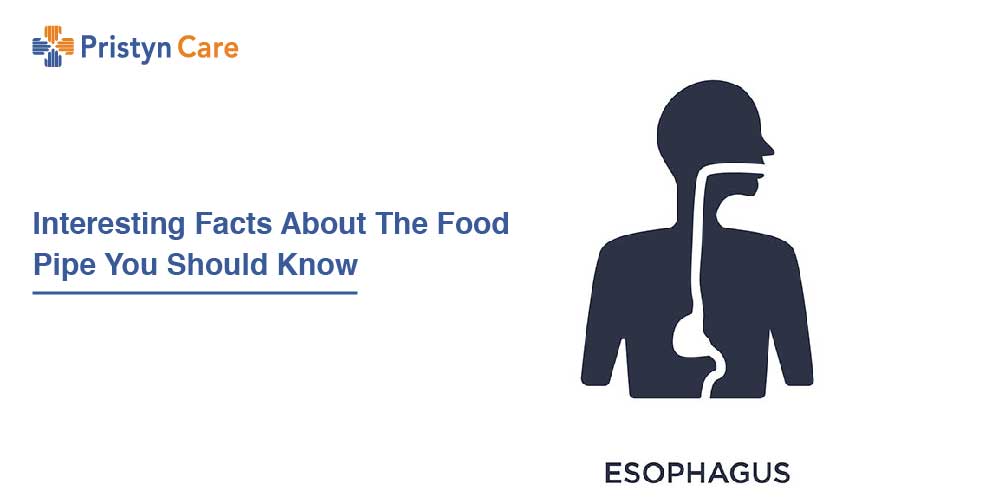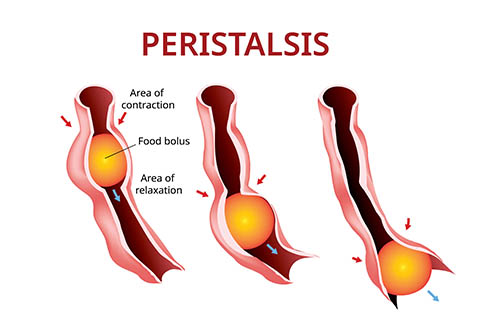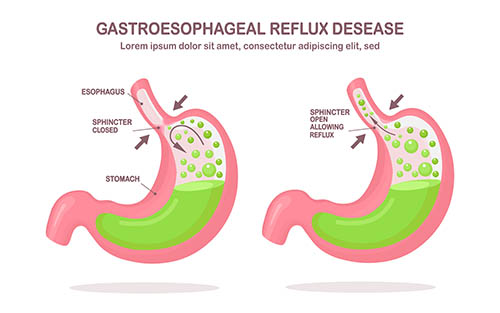
The esophagus is one of the most taken for granted organs of the body. An amazing fact is that it takes almost 7 seconds for the food to reach from the throat to the stomach. Considered as the highway for foods and fluids to travel along to make it to the stomach, this organ can have many disorders. In a recent study conducted in India showed that more than 50% of children of 1-24 months of age are suffering from the problem of regurgitation.
Some interesting facts of the esophagus are discussed below-
1. The esophagus is an 8-inch long hollow tube that resides in the upper digestive tract that links the throat to the stomach. It is commonly known as the food pipe. It is derived from the Greek word Oesophagus, which means gullet.
2. Saliva acts as a lubricant which makes it easier for the food to pass through the esophagus. Did you know that the saliva also helps in the process of digestion?

3. Have you ever wondered how food from your mouth to the stomach? This is because of the esophagus. It is just not only a hollow tube that is used to pass food from the throat to the stomach but also made of muscles that can contract and push the food towards the stomach. This passing of food through the contraction of muscles is known as peristalsis.
4. The reverse of the peristalsis results in vomiting or throwing up. Here the food moves from duodenum to stomach and is expelled out through the esophagus.
5. The esophagus also has two sphincters which help in the movement of the food to pass through. The first one is present where the esophagus starts. This is known as Upper Esophageal Sphincter(UES). We can control the UES. The other one is at the junction of where the esophagus meets the stomach. This is the Lower Esophageal Sphincter (LES) and is involuntary which means you cannot control it.
6. It is obvious to think what does these sphincters do? Each sphincter has its own function. The upper esophageal sphincter’s function is to control breathing, swallowing, belching and vomiting. The lower esophageal sphincter’s function is to prevent food from getting into the esophagus again once it enters your stomach.
7. It is one of the most taken for granted organ and susceptible to many diseases and disorders which can be life-threatening.
8. When the sphincters get weak, the stomach’s acid goes up to the esophagus and damages its lining. This disease is known as Gastro-Esophageal Reflux Disease. More than 250 million people in India are suffering from GERD.

9. If you are obese, a chain-smoker or regularly take certain medications you are more likely to suffer from this disease. The symptoms of GERD include difficulty in swallowing, nausea and vomiting, or belching or even respiratory problems.
10. Another disorder that commonly affects the food pipe is Barrett’s Esophagus where the lining of the food pipe transforms into tissues that resemble the lining of the intestine. If you leave it untreated for long, then it can lead to cancer also.
11. Esophageal spasms, also called Nutcracker esophagus is yet another type of disorder. Due to the unexplained muscle contractions of the esophagus, these spasms occur. It can be very painful and if these spasms continue then it may lead to dysphagia or difficulty in swallowing.
12. In Esophageal Varices, the veins in the esophagus region inflamed which can cause tremendous pain. In severe cases, there can be bleeding also which may lead to death.
13. If you take deep breaths, this can reduce the chances of acquiring GERD to a great extent. It strengthens the muscles of the esophagus.
14. Quit smoking, control what is going in the esophagus, avoid carbonated drinks, including a lot of veggies and fruits in your diet, etc., keeps your esophagus healthy.
15. Try to lose weight, at least 5 to 10 percent by making dietary changes and also exercising which can lower the risk of GERD.
16. You should sleep in a tilted position so that the acid remains in the stomach at night. Lie on the left side than the right side as the stomach is located higher than the esophagus while sleeping on the right side, which can put pressure on the lower esophageal sphincter (LES), which can increase the risk for fluid to backup.
The safest option for the treatment of any disease related to the esophagus is considered to be a laparoscopy. In laparoscopy, a thin, telescope-like instrument is inserted through a small incision at the navel. The surgery is performed under general anesthesia so you cannot feel any pain during surgery.
*Disclaimer: The content is written and reviewed as per the expertise and knowledge of the author and reviewer. For a final call related to ailment, we highly recommend people to Consult with a Specialized Doctor and take necessary decisions as per the Doctor’s suggestions.







